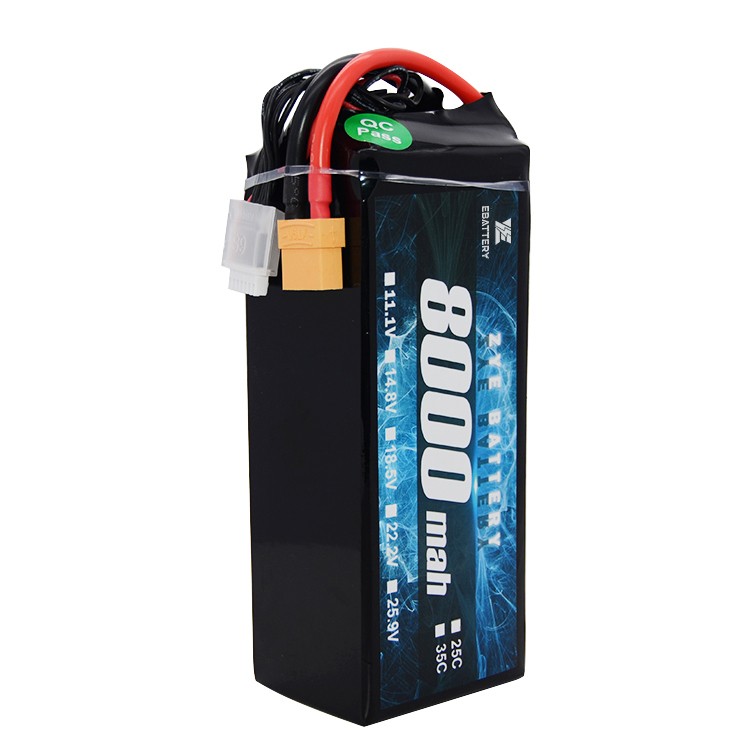How do I choose a LiPo battery for my drone?
2024-06-05
Choosing the right LiPo (Lithium Polymer) battery for your drone involves several key considerations to ensure optimal performance, safety, and longevity. Here’s a detailed guide to help you make an informed decision:

1. Battery Voltage (Cell Count)
- Voltage Rating: LiPo batteries are rated by the number of cells in series (S). Each cell has a nominal voltage of 3.7V.
- 1S = 3.7V
- 2S = 7.4V
- 3S = 11.1V
- 4S = 14.8V (and so on)
- Drone Requirements: Check your drone’s specifications for the recommended voltage. Using a battery with the incorrect voltage can damage the electronics.
2. Capacity (mAh)
- Capacity Rating: Measured in milliamp-hours (mAh), this determines the battery’s energy storage capacity.
- Flight Time: Higher capacity generally means longer flight times, but also increased weight. Balance capacity with weight to optimize flight performance.
3. Discharge Rate (C Rating)
- C Rating: Indicates how quickly the battery can discharge its power. Higher C ratings allow for more current output.
- Calculation: A 20C battery with a capacity of 2000mAh can discharge at 20 x 2000mAh = 40,000mA or 40A.
- Drone’s Power Demand: Ensure the battery’s discharge rate meets or exceeds your drone’s maximum current draw, especially for high-performance or racing drones.
4. Weight and Size
- Physical Fit: Make sure the battery fits within the designated compartment of your drone.
- Weight Consideration: Heavier batteries can reduce flight time and agility. Aim for a balance between capacity and weight.
5. Connector Type
- Compatibility: Ensure the battery connector type matches your drone’s power connectors (e.g., XT60, Deans, EC3).
- Adapters: If necessary, you can use adapters, but direct compatibility is preferable for reliability and efficiency.
6. Brand and Quality
- Reputable Brands: Choose batteries from well-known and reliable brands. Quality batteries are safer and perform better.
- Reviews: Read user reviews and feedback to gauge real-world performance and reliability.
7. Battery Management System (BMS)
- Protection Features: Some LiPo batteries come with built-in management systems that protect against overcharging, over-discharging, and short circuits.
- Safety: Additional protection enhances battery safety, especially during charging and discharging.
8. Charger Compatibility
- Compatible Charger: Ensure your charger can handle the voltage and cell count of your selected LiPo battery.
- Charging Speed: Match the charging current to the battery specifications for safe and efficient charging.
9. Budget
- Cost vs. Quality: Higher-quality batteries may be more expensive but offer better performance and longevity.
- Value for Money: Consider the long-term value of investing in a quality battery over cheaper, potentially less reliable options.
10. Intended Use
- Type of Flying: For casual flying, a standard battery may suffice. For racing or heavy-lift applications, higher discharge rates and capacities are crucial.
- Weather Conditions: Ensure the battery can handle the environmental conditions you plan to fly in, as extreme temperatures can affect performance.
By carefully considering these factors, you can choose a LiPo battery that will provide reliable power, enhance your drone's performance, and ensure safe operation.


